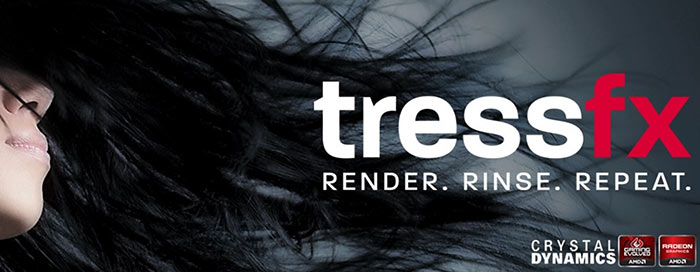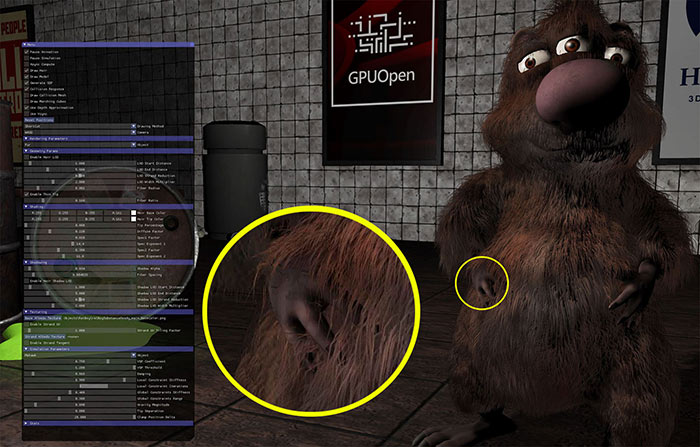AMD's TressFX hair and fur rendering and simulation technology has been updated to version 4.1. As well as some new features and optimisations, an important change is that AMD TressFX 4.1 is more developer friendly than ever, so we should see it used in more upcoming games.

TressFX is designed to offload the rendering of complex hair and fur materials to the GPU. Behind the scenes AMD has optimised its physics simulation shaders. More evidently it has added new rendering features (StrandUV and Hair Parameter Blending), and implemented a new Level of Detail system. Develoeprs will also welcome the new documentation and tutorials, and an updated TressFX Exporter for Autodesk Maya.
All the above are worthy improvements but perhaps the most welcome change with AMD TressFX 4.1 is its integration into development platforms. TressFX 4.1 includes the following:
- TressFX/Unreal engine integration (patch under Epic Games Unreal GitHub repository) with multiple components, rendering and simulation material support
- TressFX/Cauldron implementation with source code (DirectX 12 and Vulkan)

With regard to UE4.22, AMD says that developers will see improved ease-of-use with multiple TressFX components, features, and rendering and simulation materials. The work already done can be customised or extended from this helpful first step. Additionally, the TressFX/Cauldron implementation demonstrates to developers how TressFX code can be "cleanly dropped into an existing codebase," says AMD.
As a reminder, TressFX requires a Radeon GCN-based GPU (HD 7000 series or newer), AMD Radeon RDNA-based GPU (5000 series or newer), or other DX11/12 discrete GPU with Shader Model 5 support, Windows 10 64-bit, and Visual Studio 2017 or equivalent is recommended for devs.

Notable previous TressFX infused games include Rise of the Tomb Raider, and Deus Ex: Mankind Divided. With this v4.1 update, the added UE4.22 integration, and the next generation of consoles known to be using Radeon RDNA graphics - we should see TressFX more widely adopted.






